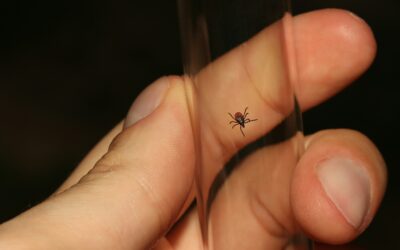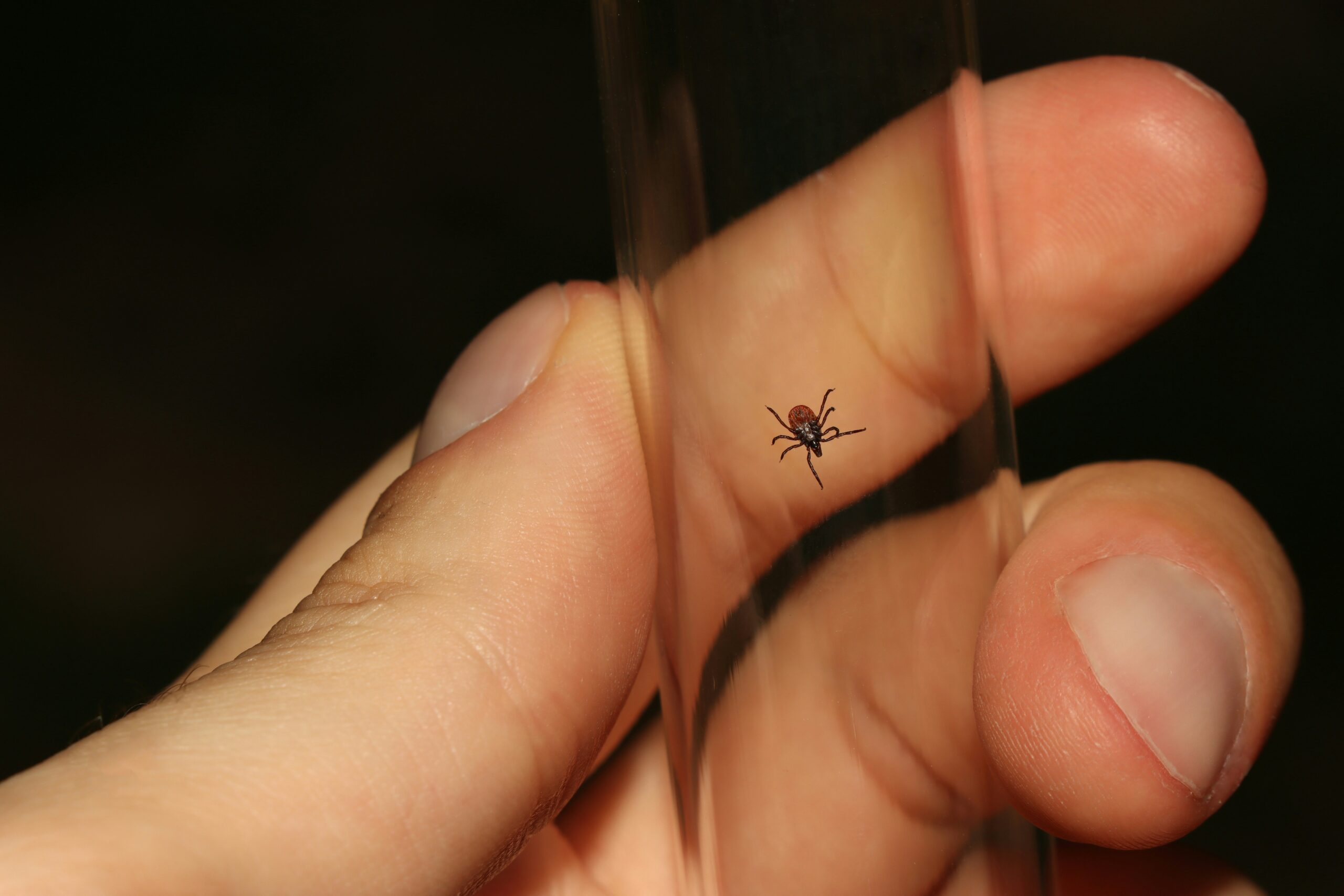APRIL 2014
8 EASY WAYS TO DETOX YOUR HOME

2. Use natural air fresheners. Instead of masking odors by using candles and air fresheners, which actually introduce more toxins into the air, try eliminating them using baking soda. To get that pretty smell you love, try naturally derived alternatives such as potpourri or essential oils.
3. Drink clean, use a filter. Chlorine is a common “cleaning” agent used in the treatment of tap water. Studies have shown that chlorinated drinking water can negatively impact the thyroid, immune system and even pregnancy, possibly increasing the risk of birth defects and miscarriage. Referred to as “the chlorine dilemma,” a better large-scale cleaning solution for water has yet to be found. As it stands, the best way to reduce your intake of toxins from your drinking water is to purchase a filter. The Environmental Working Group’s national drinking water database and filter buying guide can help you better understand the contaminants present in your tap water and choose the best water filter for you. At the clinic, we use Vollara to filter out the chlorine and fluoride. Contact us if you are interested in learning more about Vollara. Also, check out the 2 Pure H2O VitaTech Water System.
4. Give your cleaning supplies cabinet a makeover. While conventional products may disinfect, they also leave behind additional toxins that have been linked to asthma, cancer, reproductive and hormonal problems. EWG’s Guide to Healthy Cleaning lists hidden toxins in cleaning supplies and provides information on how to read cleaning product labels. Try some non-toxic methods, such as using diluted vinegar for windows, and baking soda paste for scrubbing. EWG’s DIY Cleaning Guide is packed with DIY recipes for non-toxic cleaners and can be yours for a small donation to the cause. Also, check out green-living expert Sara Snow’s advice.
5. Ditch the plastic. Storing, cooking and freezing food in plastic containing petrochemicals such as #3PVC (commonly used in food packaging and plastic wrap) and Bisphenol A (BPA) (commonly used in hard plastics like tupperware, water bottles and baby bottles) can cause these chemicals to leak into your food. Studies have linked #3PVC and BPA to a number of health problems, most notably cancer, reproductive system damage, impaired brain development, liver dysfunction and impaired immune function. Not all plastics are created equal. When purchasing plastics, look for the resin identification number located in a triangle on the product. Opt for containers made of #1, 2, 4 or 5 plastics. Better yet, ditch plastics in favor of lightweight stainless steel or Pyrex glass containers. We drink our water and green juices from glass mason jars. Every morning, I peel one lemon and cut it into 4 sections and add it to my mason jar and fill it up with natural spring water. I keep refilling it and strive to drink 3 of these a day!
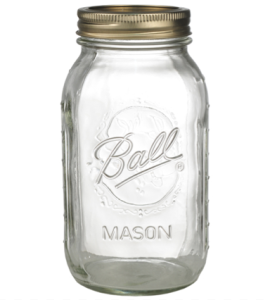
6. Truly clean your laundry. Laundry soaps, fabric softeners and dryer sheets, particularly those of the scented variety, are allergen and asthma inducing culprits. In fact, fragrances are among the world’s top five allergens. Additionally, many softening chemicals, referred to as “quats,” have antibacterial qualities, and overuse of such chemicals may cause the development of antibiotic-resistant superbugs. To reduce your family’s exposure, choose free and clear laundry soaps. Skip fabric softeners and dryer sheets all together and substitute with a 1/2 cup of white vinegar per load during the rinse cycle. For the time being we use Seventh Generation Natural Laundry Detergent.
7. Bathe in nature. Soaps, shampoos, conditioners and other body products often contain harmful chemicals that have been linked to cancer and other health problems. The EWG’s Skin Deep Cosmetics Database is an easy way to learn more about your personal care items and help you make less toxic choices in the future. In our shower, you will find Everyday Shea Lavender body wash as well as my favorite soap by Nubian Heritage in Indian Hemp & Haitian Vetiver. It smells divine. Both products you may find at Whole Foods.
8. Protect your grin. Most toothpaste sold in the U.S. contains fluoride. Proper usage instructions are often confused with advertising tactics, making the use of fluoride potentially very dangerous. In fact, the health risks associated with fluoride are so serious that the FDA requires a poison warning on every tube of fluoride toothpaste now sold in the US. Risks from ingestion include stomach problems, permanent tooth discoloration, skin rash, metabolism impairment and acute toxicity. The best solution to eliminating the risk of fluoride poisoning is to switch to a fluoride-free brand of toothpaste. If switching isn’t an option, be sure to abide by the real rules of use and stick to a pea-size amount of toothpaste, and don’t swallow. We interchange Kiss My Face Triple Action Whitening and doTerra’s OnGuard Natural Whitening Toothpaste.
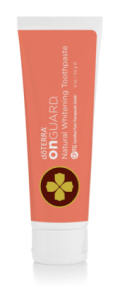
– Decorate with air-cleaning plants. They will help cut down on seasonal allergies.
– Dilute cleaning supplies and use gloves when cleaning.
– Avoid “antibacterial” cleaners. Use soap and water instead.
– Remember, just because the word natural, or some other variation, appears on the container, it does not mean that the product is truly natural, much less toxin free.
References
Photo Credit. FreeDigitalPhotos.net.
Poisoning and Toxicity. Natural Standard Bottom Line Monograph. 2013.
Your Best Air Freshener Isn’t An Air Freshener. Rebecca Sutton, PhD, EWG Senior Scientist. Environmental Working Group.
EWG National Drinking Water Database. Environmental Working Group.
Do You Filter Your Tapwater? Should You? Environmental Working Group.
Forgotten Toxics in American Water. Renee Sharp, EWG Senior Scientist and J. Paul Pestano, EWG Research Analyst. Environmental Working Group.
Chlorinated Tap Water Called Risk for Pregnant Women. San Francisco Chronicle.
Healthy Home Tips: Tip 9 – Use Greener Cleaners and Avoid Pesticides. Environmental Working Group.
EWG’s Guide to Healthy Cleaning. Environmental Working Group.
EWG Questions FDA Verdict on Plastic Chemical. Environmental Working Group.
Storing Food Safely In Plastic Containers. TheEcologist.org.
Adverse Health Effects of Plastics. Ecology Center.
Don’t Get Slimed: Skip the Fabric Softener. Rebecca Sutton, PhD, EWG Senior Scientist. Environmental Working Group.
EGW’s Skin Deep Cosmetics Database. Environmental Working Group.
Toothpastes. FlourideAlert.org.
CHIA SEEDS
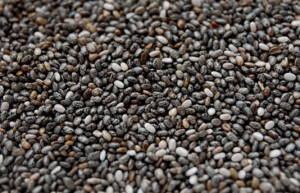
Two tablespoons of chia seeds have 10 grams of fiber, 18% of the DRI for calcium, 35% for phosphorus, 24% for magnesium and about 50% for manganese. These nutrients help prevent hypertension and maintain a healthy weight. Chia seeds also contribute to feeling full and satisfied thanks to the combination of protein, fiber and their gelling action when mixed with liquids. Chia seeds contain no gluten or grains and are a great source of protein for vegetarians.
References
Chia Seeds Benefits: 10 Reasons To Add Chia To Your Diet. Huffington Post.
Top 10 Health Benefits of Chia Seeds. Healthy Eating
RECIPE: APPLE-CHIA-KOMBUCHA
In a 16 oz bottle combine:
- 3-4 tablespoons organic chia
- 8 oz. Unfiltered Organic Apple Juice
- 7 oz. Kombucha, our flavor is Hibiscus-Jasmine-Green Tea
Another recipe I really enjoy is Oh She Glows’ Chia Fresca, you can check out here for the recipe along with many other amazing recipes.
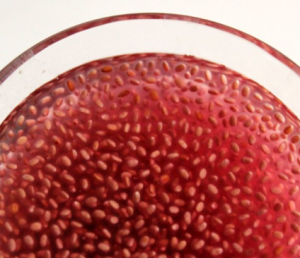
BUTTERBUR (Petasites hybridus)
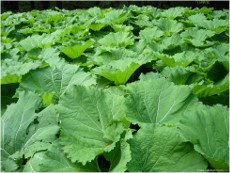
Butterbur (Petasites hybridus). Natural Standard Professional Monograph. 2013.
Herbs at a Glance. Butterbur. National Center for Complementary and Alternative Medicine.
BROMELAIN
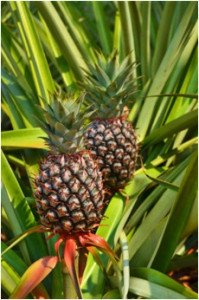
References
Photo Credit – FreeDigitalPhotos.net.
Bromelain (Ananas comosus, Ananas sativus). Natural Standard Professional Monograph. 2013.
Bromelain. University of Maryland Medical Center.
AIR THERAPY
While some plants cause seasonal allergies, it is also true that other plants will help filter the air of various allergens as well as harmful chemicals that invade the home.

- Aloe vera and spider plant naturally filter the air of formaldehyde and benzene which are prevalent in materials, paints and cleaners used today.
- Spider plant also filters carbon monoxide and xylene, a solvent used in the leather, rubber and printing industries.
- If you dry clean your clothing, gerber daisies are a good option as they have a knack for removing trichloroethylene in addition to benzene.
- Golden pothos, a fast-growing vine that doesn’t mind the dark, has been suggested for use in the garage as it will help filter formaldehyde from car exhaust before it creeps into your home.
Of course, these are only a few of the many air-cleaning plants to consider. When shopping for air cleaning plants for your home, be sure to note the lighting and standard temperature for where you will keep each plant, as these conditions can affect the growth and productivity of the plants. You’ll want to match plants with both their location and conditions as well as the pollutants they filter.
If you’re looking for a more modern option and prefer the convenience of a mechanical air purifier, remember that not all air purifiers are created equal. Many air filtration systems only clean the air of larger air particles but miss the ultrafine particles that account for about 90 percent of all airborne particles. These ultrafine particles come from motor vehicles, refineries, industrial plants and even cooking. They are easily inhaled and have been linked to asthma, heart attacks, strokes and cancer.
We recommend the IQAir Cleaner Health Pro Plus, a HyperHEPA filtration system that has been proven and certified to filter up to 99.5 percent of all particles in the air, including ultrafine particles that most other filtration systems miss. As an added bonus, this air filtration system cleans the air in a four step process that produces no residual risky side effects such as dangerous ions, ozone or UV.
Whichever way you prefer to clean your air, all of these options will help, promoting better breathing and body functioning, leading to a healthier home and a healthier you.
References
Photo Credit. FreeDigitalPhotos.net
HealthPro® Series. iqair.com.
15 Houseplants For Improving Indoor Air Quality. Mother Nature Network.
PEACE LILIES
My neighbor at work went out of town and asked us to take care of her Peace Lilies because they needed to be watered ever so often. I fell in love with them and they truly made us feel at peace. Later that week, we stopped by the nursery to purchase three of our own Peace Lilies to add to our IV room. They are lovely, serene, easy to care for and they notify you when they need to be watered because they will sag. Both resilient and forgiving, they perk up when they are watered. The Peace Lily is recognized by NASA for its air-cleaning properties and is on its list of top ten household air cleaning plants. It breaks down and neutralizes toxic gases like formaldehyde and carbon monoxide inside its pores. Click here to read about how to care for Peace Lilies. Not recommended for the home if you have cats or dogs.
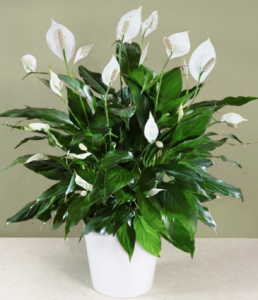
- Aloe vera and spider plant naturally filter the air of formaldehyde and benzene which are prevalent in materials, paints and cleaners used today.
- Spider plant also filters carbon monoxide and xylene, a solvent used in the leather, rubber and printing industries.
- If you dry clean your clothing, gerber daisies are a good option as they have a knack for removing trichloroethylene in addition to benzene.
- Golden pothos, a fast-growing vine that doesn’t mind the dark, has been suggested for use in the garage as it will help filter formaldehyde from car exhaust before it creeps into your home.
Of course, these are only a few of the many air-cleaning plants to consider. When shopping for air cleaning plants for your home, be sure to note the lighting and standard temperature for where you will keep each plant, as these conditions can affect the growth and productivity of the plants. You’ll want to match plants with both their location and conditions as well as the pollutants they filter.
If you’re looking for a more modern option and prefer the convenience of a mechanical air purifier, remember that not all air purifiers are created equal. Many air filtration systems only clean the air of larger air particles but miss the ultrafine particles that account for about 90 percent of all airborne particles. These ultrafine particles come from motor vehicles, refineries, industrial plants and even cooking. They are easily inhaled and have been linked to asthma, heart attacks, strokes and cancer.
We recommend the IQAir Cleaner Health Pro Plus, a HyperHEPA filtration system that has been proven and certified to filter up to 99.5 percent of all particles in the air, including ultrafine particles that most other filtration systems miss. As an added bonus, this air filtration system cleans the air in a four step process that produces no residual risky side effects such as dangerous ions, ozone or UV.
Whichever way you prefer to clean your air, all of these options will help, promoting better breathing and body functioning, leading to a healthier home and a healthier you.
References Peace Lily Care Guide. ProPlants.comHow To Care For Peace Lilies. wikiHow.com
The information offered by this newsletter is presented for educational purposes. Nothing contained within should be construed as nor is intended to be used for medical diagnosis or treatment. This information should not be used in place of the advice of your physician or other qualified health care provider. Always consult with your physician or other qualified health care provider before embarking on a new treatment, diet or fitness program. You should never disregard medical advice or delay in seeking it because of any information contained within this newsletter.
Follow us on instagram
BLOG
Become an educated consumer with our Indigo Blogs and prevent dis-ease.
Our Doctors have been featured in:
